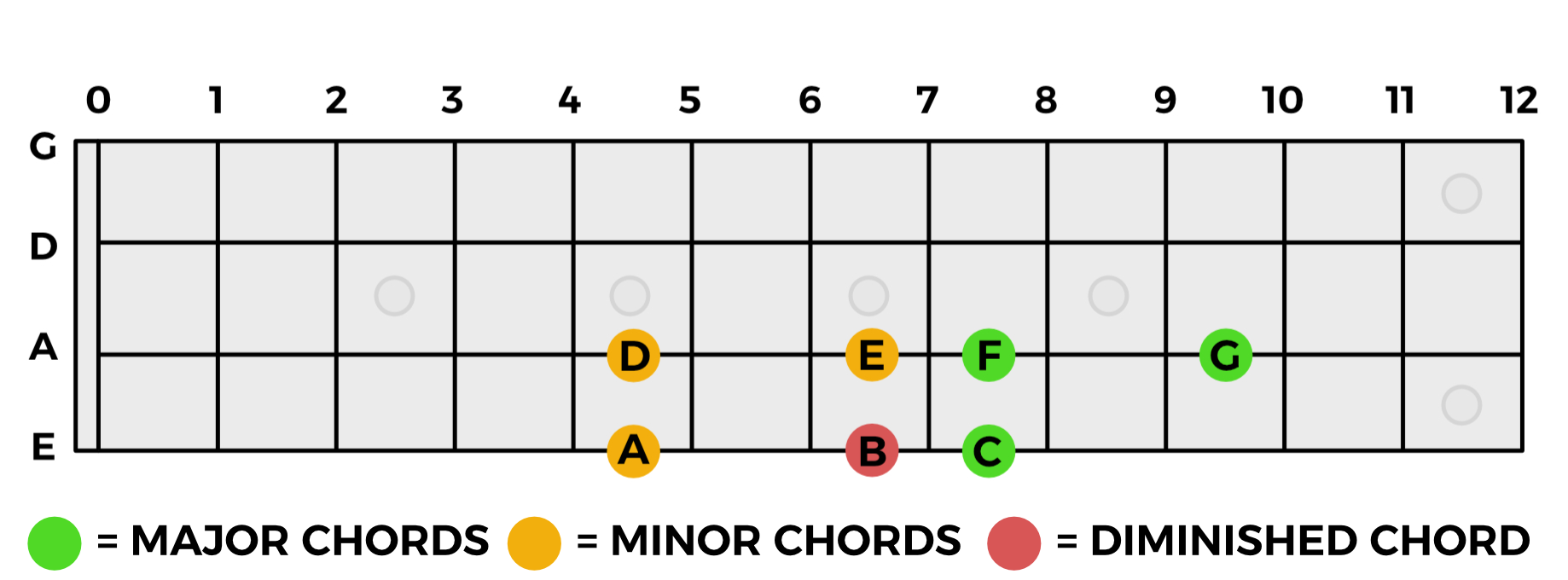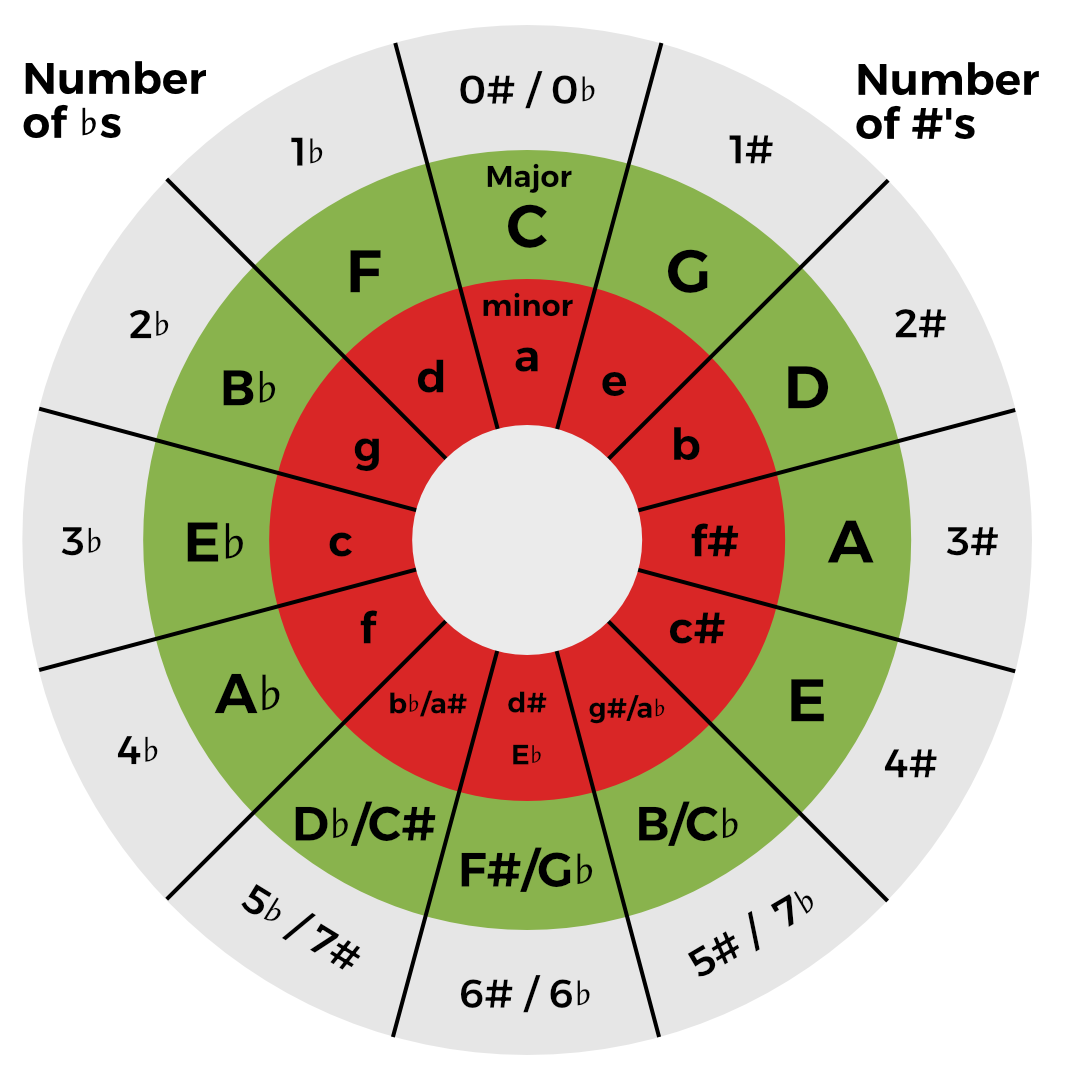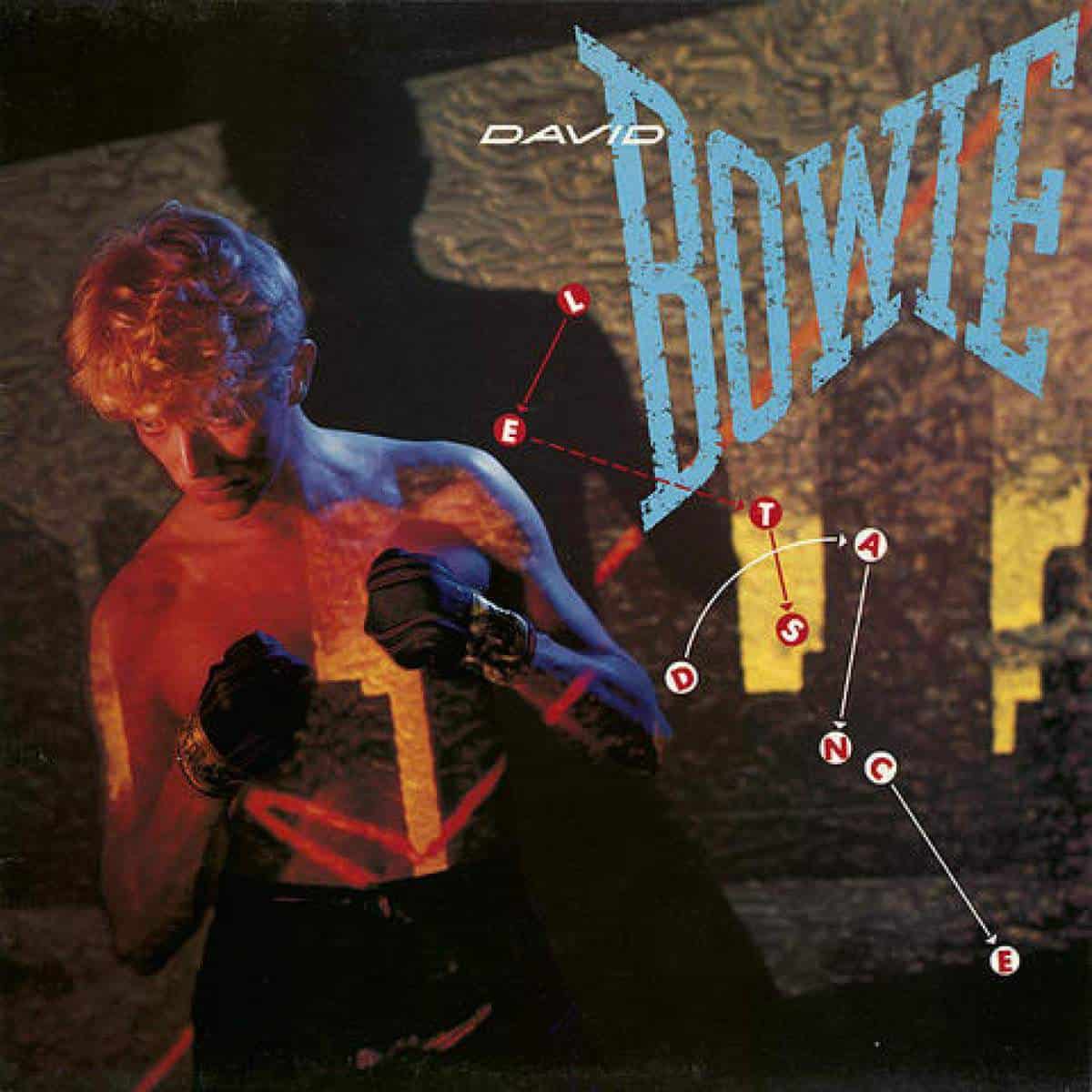
That title is a bit of a mouthful! Sorry about that.
But there is a lot of information to get your head around when it comes to these elements of music theory. It all works together and can really enhance your understanding but it's dense, esoteric, VERY nerdy stuff.
To help out, I've created some Cheatsheets to hopefully give you some "look-up tables" to make finding answers to things that might be bugging or confusing you.
In this post you'll find a number of "handy" (ish) cheatsheets exploring the Notes, Chords, Intervals and Formulas to help you work with the Major Scale, minor Scale, the Pentatonics and the Modes.
No fancy or complex deep dives into the theory here, just some take aways for you to grab and refer to. I hope they're helpful. Let me know if you find them useful. 👍🏽
Scales/Keys are collections of 7 non-repeating notes, A to G. For reasons beyond the scope of this post, they have a defined sequence and are made of increasing numbers of Sharps and Flats starting with none for C Major/A minor and going up in increments of one from there.
The Major and minor Scales (and Modes) are made up of Intervals; this is a way to describe the distance between each note.
If there is a note between two notes in a Scale then it's a Whole-Tone (C to D has C#/D♭ between it so it's a Whole-Tone Interval); if there are no other notes between one note and the next, it's a Half-Tone (E to F and B to C have no other notes between them so they are Half-Tone Intervals)
All Major and minor Scales share the same Interval patterns: memorise the 2 patterns here and you know how to create and understand all Major and minor Scales. Those patterns are:
Major = W-W-H-W-W-W-H
minor = W-H-W-W-H-W-W
Each note in the Scale is assigned a number, 1 - 7 (called Degrees). These numbers are what people refer to when they talk about the Number System (sometimes referred to as the Nashville Number System or the Numeral System when the numbers are in Roman Numerals).
These numbers are used to refer to the Chords that are built on the notes of a Scale and create a shorthand way of describing a song's structure.
The Major and minor Scales, as well as being handy collections of notes, are collections of Chords too. I'm not going into how to build a Chord here.
As with the Scales and their Intervals, there is a pattern to each that you can learn and once you have, no matter which Key you're in, you'll know both the notes of the Scale/Key and the Chords in that Key that are available to you.
The patterns are:
Major = M-m-m-M-M-m-dim
minor = m-dim-M-m-m-M-M
Learn these and no matter what Key you're in, Major or minor, you can know what Chords are in it.
This comes in handy when using the Numbers to decribe a song. If someone says, "It's a 1-4-5 Blues in D..." you know that you have the Chords D, G and A to work with.
Enough rambling, on to the Cheatsheets.
I don't really like the Circle of Fifths as a visual aid or a tool so I created this bad boy. It's a bit scary looking but it's just a look up table.
Pick a Major Key and go up.
Pick and minor Key and go down.
That's all there is to it. Follow the column and you've got all the Chords in that Key.
They're colour coded (and labelled if you have issues seeing certain colours): Green for Major, Red for minor and Yellow for Diminished.
You can use this chart with the "Number System" as well; there's a column with the Scale Degree on each side so you can map your Major and minor Chords to their numbers.
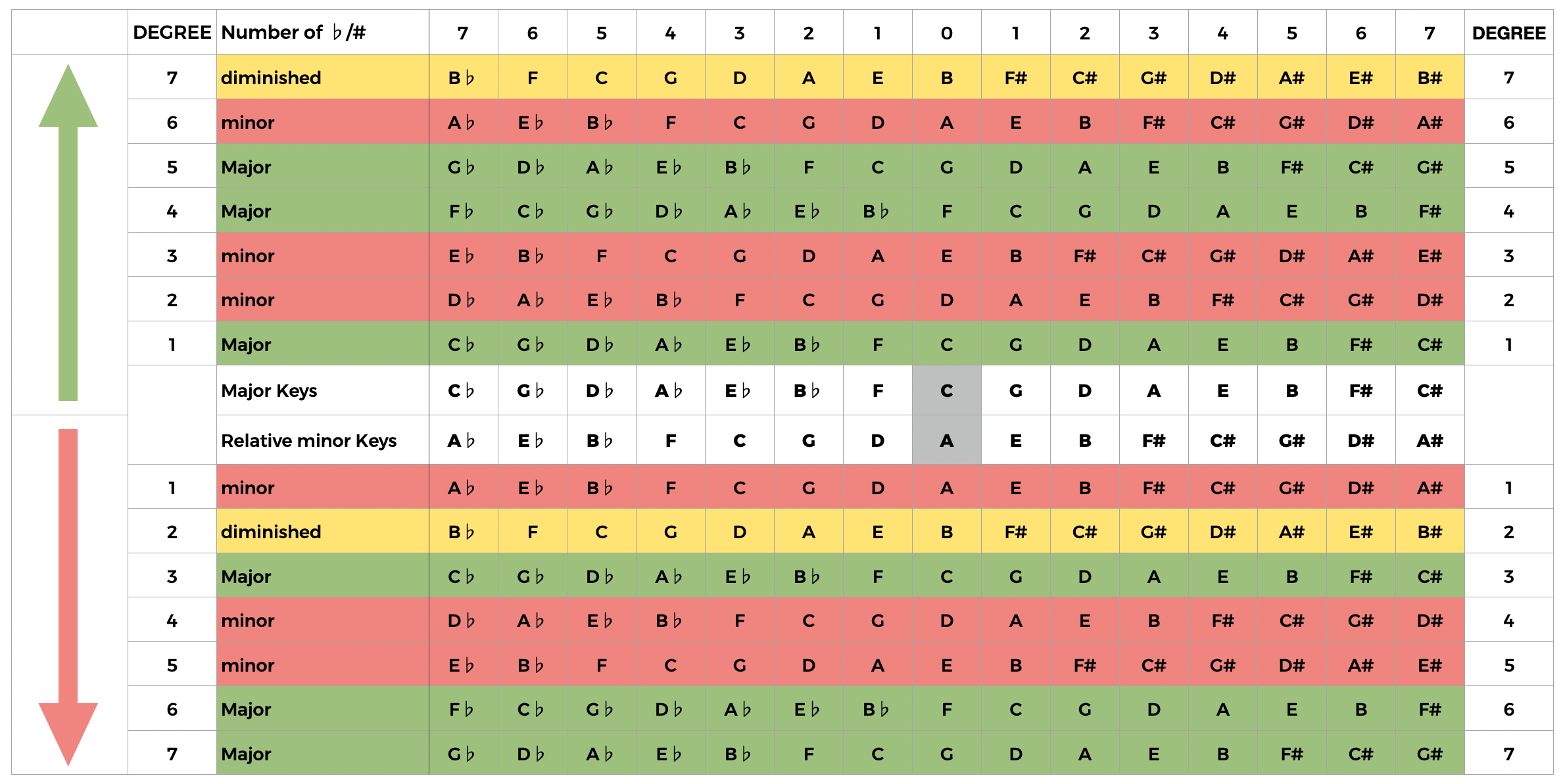
Think of the Modes as different flavours of a Scale. Each Mode is made of the SAME notes as the parent Scale. They come in Relative and Parallel forms.
For Relative Modes, long story short, if you take a Scale like C Major (it has no Sharps or Flats so it's clean to work with) you have the notes C-D-E-F-G-A-B; if you play all those notes but start on D, (D-E-F-G-A-B-C), you now have what's called the D Dorian Mode.
If you move up one more note and start on E you have E Phrygian (E-F-G-A-B-C-D). Again, all the same notes, just starting 0ne note up.
This is true for all the Major (and minor, but that requires a bit more explaining...) Scales.
The Modes are:
If we take E♭ Major, (E♭-F-G-A♭-B♭-C-D), and we start on F and use all the same notes, we'll create F Dorian: F-G-A♭-B♭-C-D-E♭.
When dealing with the Modes of the minor Scale, you start with your minor (which is technically the 6th Mode of a Major parent), for example, E minor, and work from there. The order changes to reflect the different starting point but, and this important, there is NO change to their Interval Patterns or Feels/Sounds.
The order then becomes:
The Parallel Modes are built using the same Interval Patterns as the Relative Modes but where the Relative Modes move up the Scale one note at a time and build a new set of 7 using the same notes, the Parallels use exactly the same set of notes and all start on the same letter as the Parent Scale.
For Example: C Major (Ionian Mode) has C-D-E-F-G-A-B; the next Parallel Mode is C Dorian which has the notes C-D-E♭-F-G-A-B♭. (C Dorian happens to be the 2nd RELATIVE MODE of B♭ Major). It gets complicated...
Like the Major and minor Scales, the Modes have Interval Patterns that are made up of Whole-tone and Half-tone steps. C Dorian Parallel uses the same Interval Pattern as the Relative Dorian Mode which is W-H-W-W-W-H-W.
Modes are complicated and often taught very badly so they confuse people. Not sure I did the best job here but below is a table of the Relative Modes of C Major with their Notes, the Interval Patterns and Formulas.
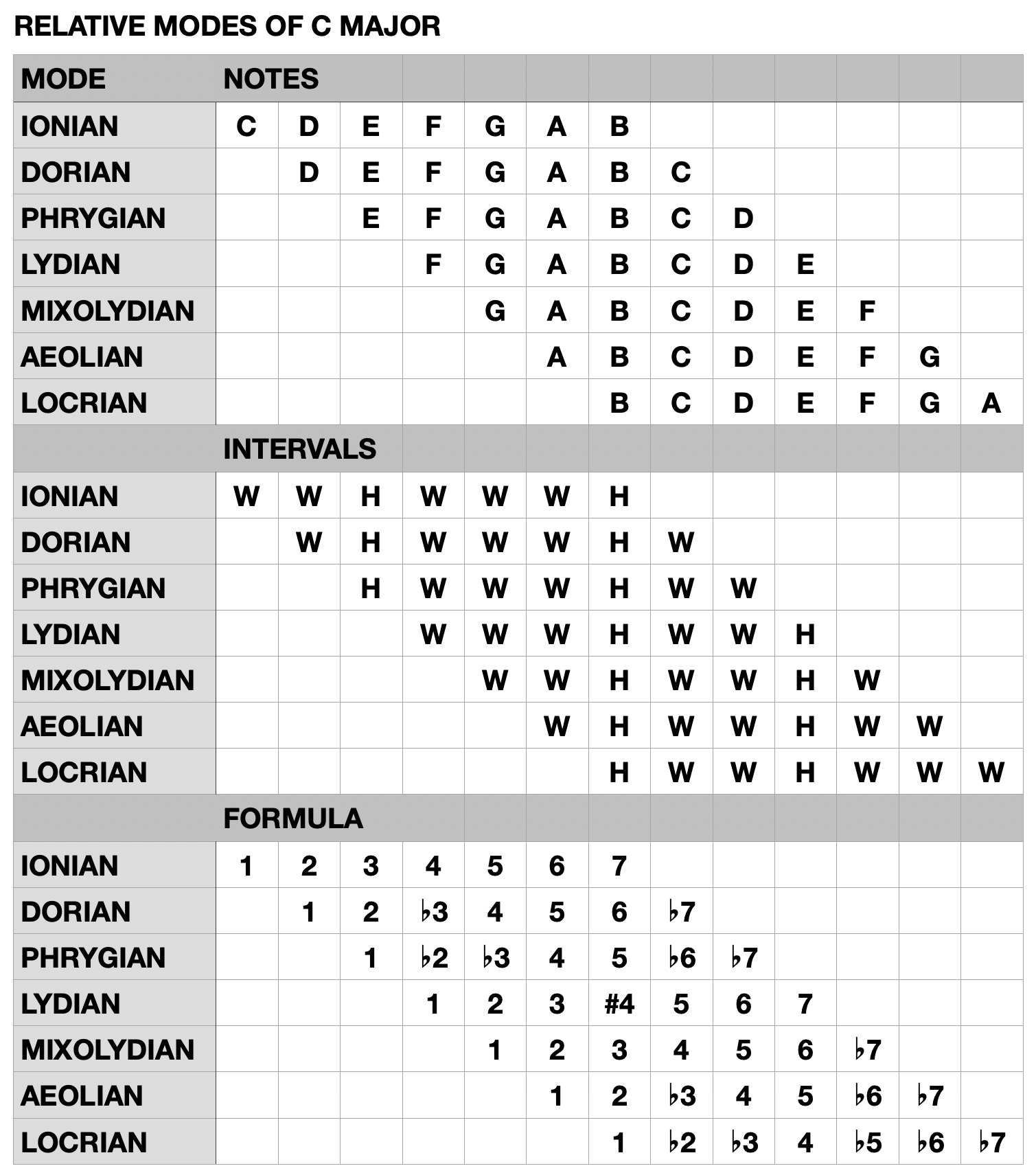
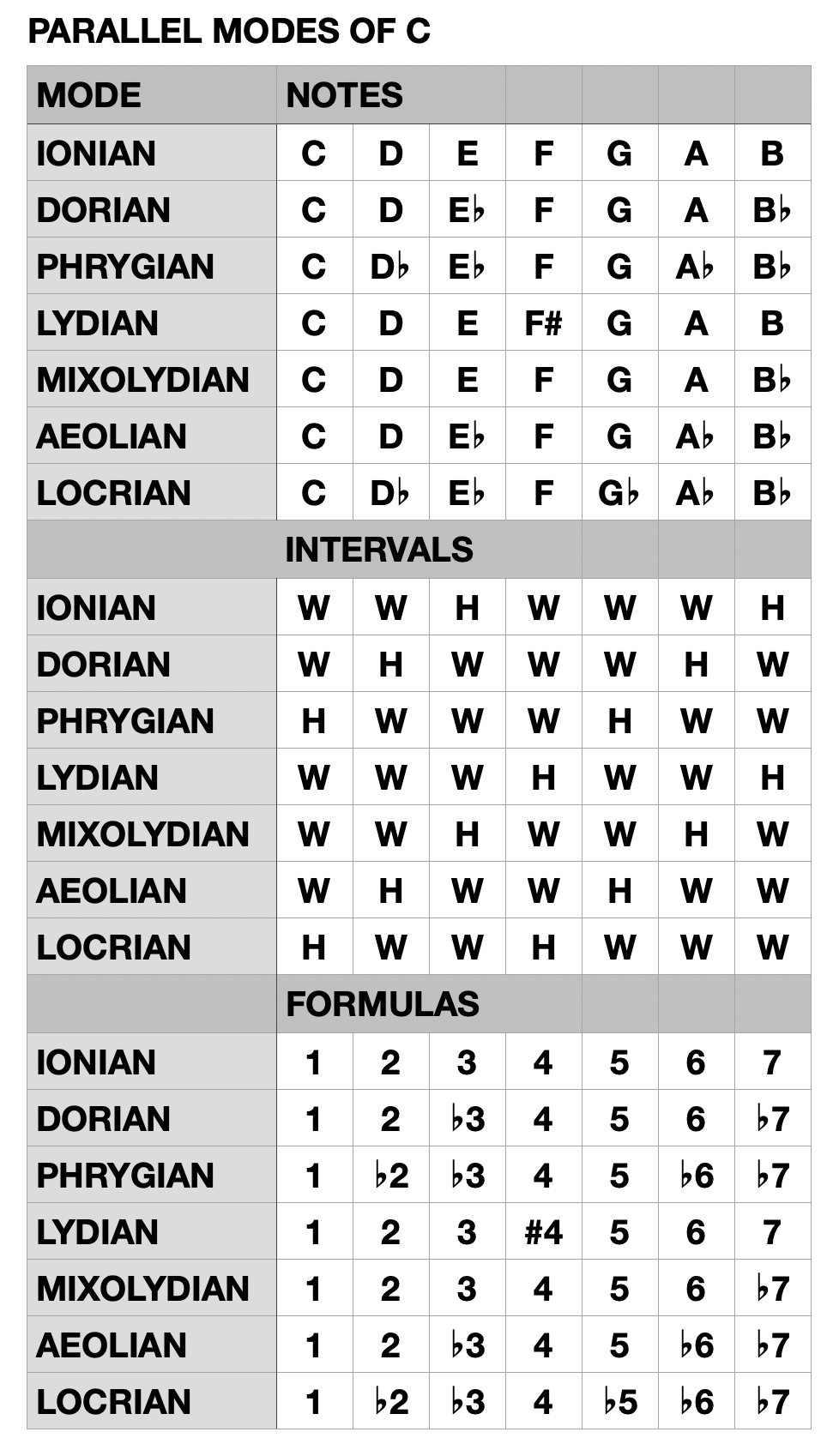
Below are the Realitve and Paralle Modes of the minor Scale (using A minor as it's the 6th Mode of C Major and shares it's lack of Sharps and Flats)
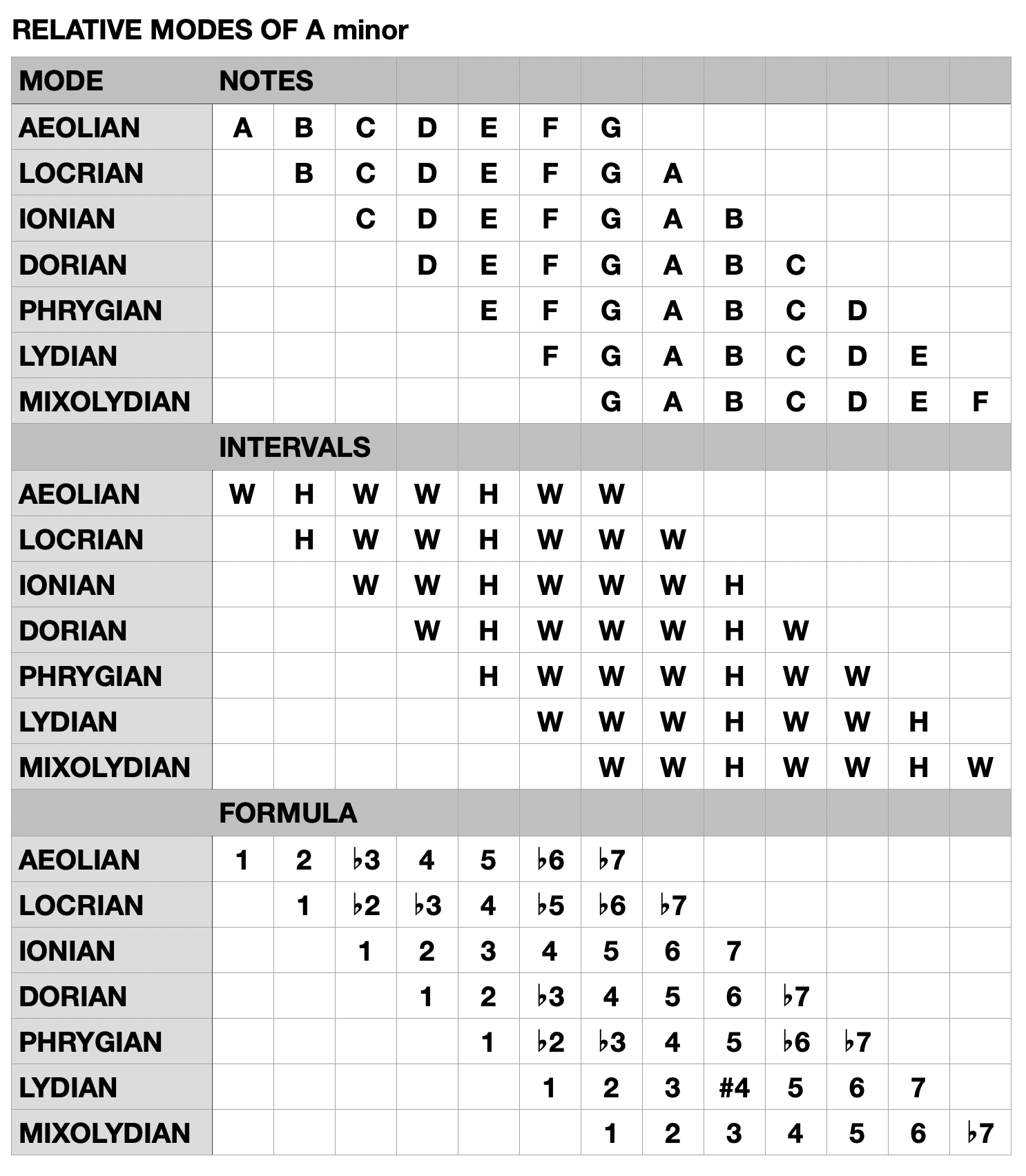
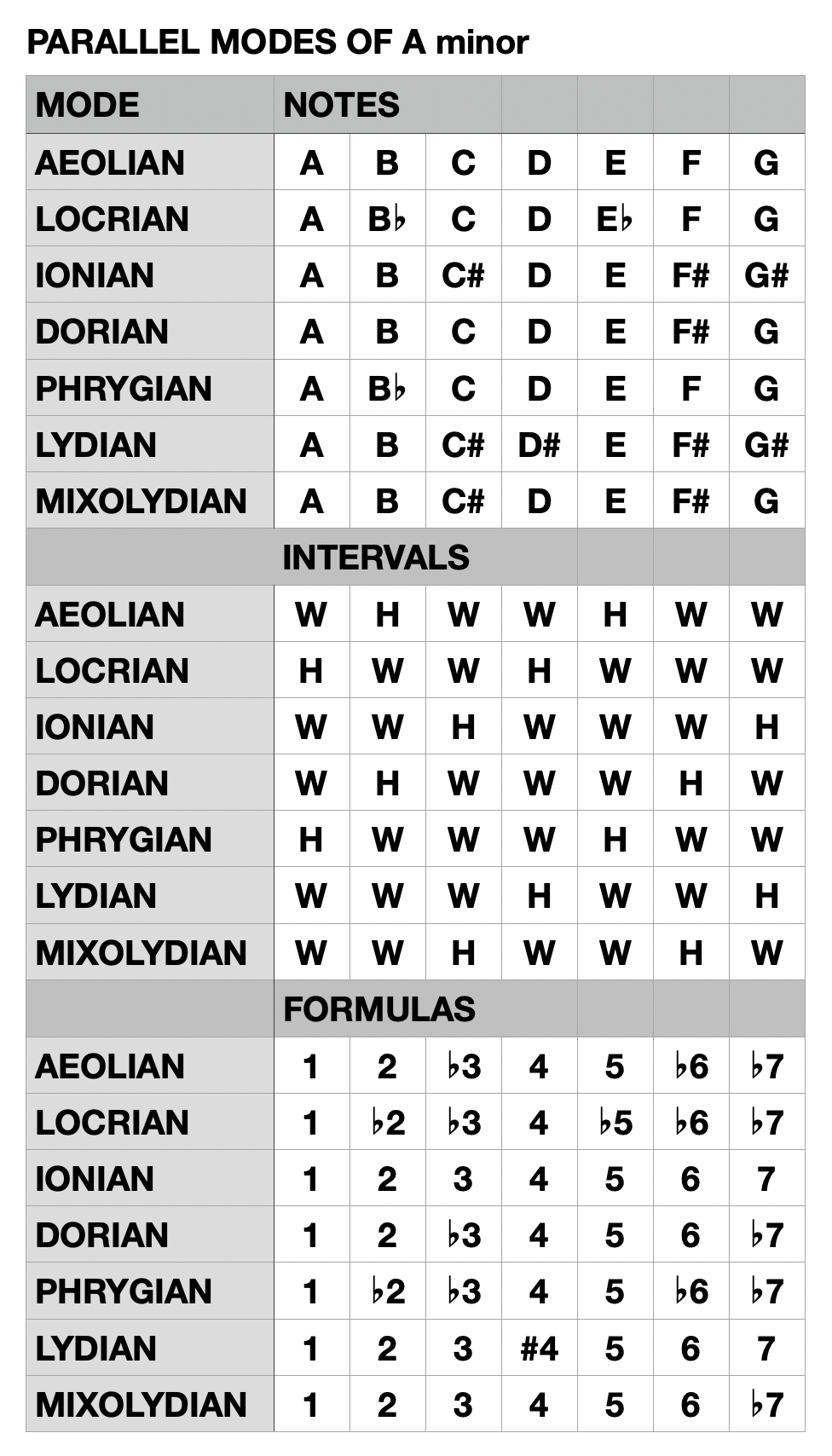
Finally we come to the Chords of the Modes.
Like the Major and minor Scales, each note of the Mode has a Chord built on top of it. Below is a cheatsheet outling these Chords. As a bonus it also contains the Major and minor Pentatonics.

And there you have it: 6 cheatsheets to help you navigate and understand Scales, Chords and Modes a little bit more effectively. I hope they're of use to you. It took a good while to create them and I'm personally happy with them...

